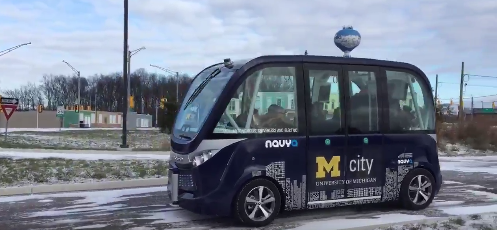Last week was a big week for autonomous vehicles in Michigan, and in Ann Arbor. There has been a lot of work over the past several years and Friday was a great showcase of some of that work.
Friday morning, Navya announced the first North American location for their Arma vehicle, an autonomous shuttle. They chose Mcity at the University of Michigan to house this project. The Arma, which lacks a steering wheel and will help shuttle visitors of Mcity around the testing site, is the first product of Navya, a company that just received over $30 million in Series A funding. Navya is based in France and toured the Ann Arbor region months ago during a mobility-focused delegation put on by Business France, one of Ann Arbor SPARK’s partners on international opportunities in Michigan. Navya will also participate in TechLab, U-M’s program that provides direct access to their engineering talent for emerging companies.
It turns out that Friday, December 9th was an ideal day to launch in Ann Arbor, because it was a chance to see how the vehicle performed in some cold and snow. I had the chance to ride inside and had no issues handling the weather. It’s the type of thing I could see my family riding in the next time we visit a theme park or getting around the city.
Meanwhile, down the road at the Automotive Hall of Fame in Dearborn, Governor Snyder was signing autonomous vehicle legislation that allows vehicles like Navya’s Arma (those without steering wheels or pedals, and without direct human control) to test on public roads. This legislation gives the opportunity for the Arma, for example, to take off from Mcity and head towards Plymouth Road, US-23, or downtown Ann Arbor (if that was desired!). Great to see how the policy framework can provide more certainty for testing of innovative technologies in Michigan and should open the door for continued development and testing of this technology, the like planned American Center for Mobility in Ypsilanti Township.
The Ann Arbor region continues to be a leader in the future of mobility technology. You can read more about the region’s work on this here.
Source: SPARK








